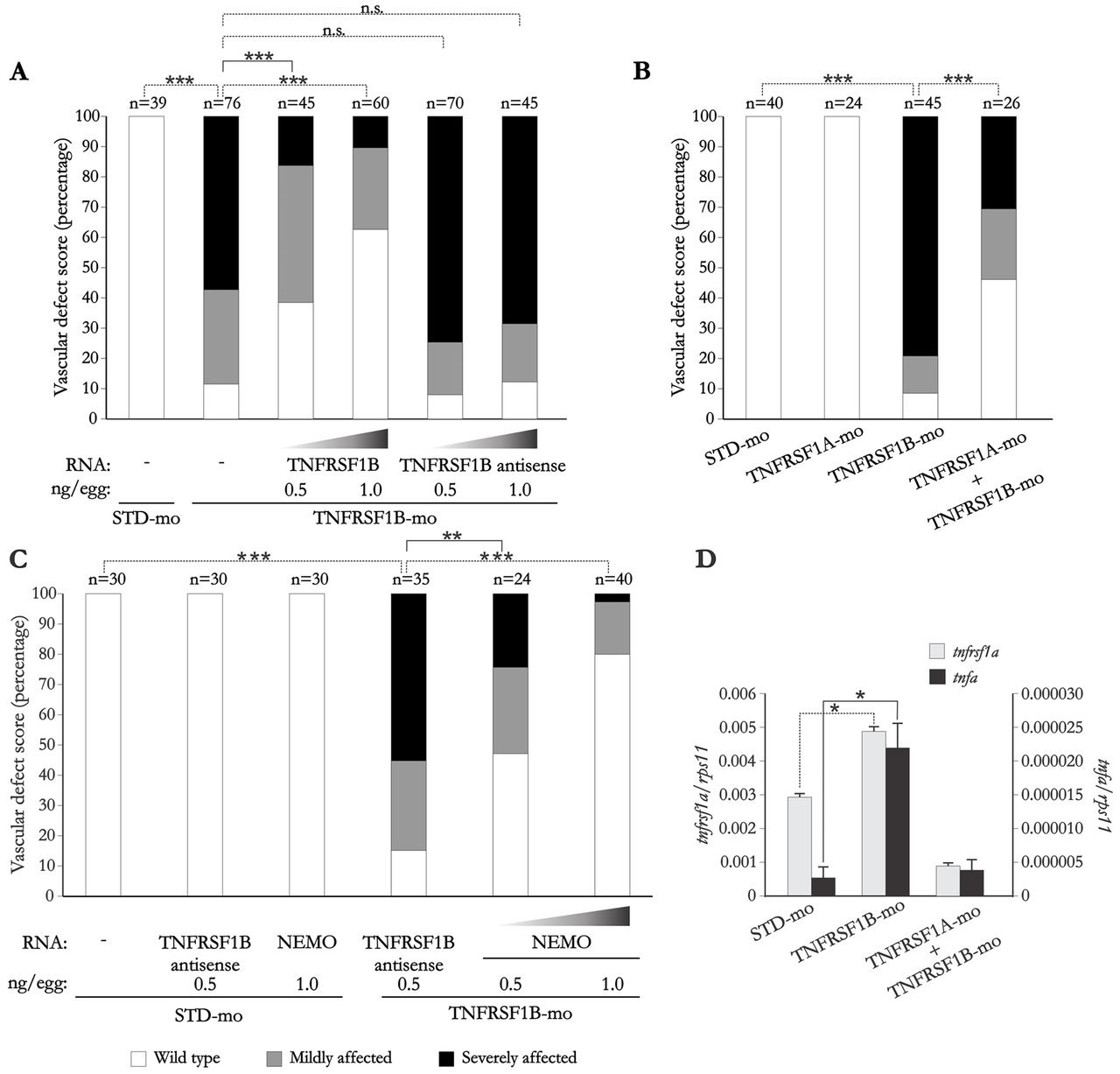Fig. 2
A crucial balance between TNFRSF1A and TNFRSF1B signaling is required for endothelial cell development and maintenance. (A-D) Zebrafish embryos were microinjected at the one-cell stage with standard (STD-mo) and TNFRSF1B MOs alone or in combination with the indicated mRNAs. At 72 hpf, the vascular defects were scored. Larvae revealing no defects were scored as wild type (white), larvae showing erythrocyte accumulation in the CHT, partial blood circulation and hemorrhages were scored as mildly affected (gray) and larvae displaying erythrocyte accumulation in the CHT and no blood circulation as severely affected (black). (A) Effect of wild-type and antisense TNFRSF1B mRNA overexpression in morphant embryos. Note that wild-type, but not antisense TNFRSF1B mRNA partially rescues the TNFRSF1B morphant phenotype (B) Partial rescue of the vascular defect promoted by genetic depletion of TNFRSF1B by TNFRSF1A depletion. (C) NEMO-mediated activation of NF-ºB partially rescues the vascular defect promoted by genetic depletion of TNFRSF1B. (D) mRNA quantification of the indicated genes were determined by real-time RT-PCR in 10 pooled larvae. The gene expression is normalized against rps11 and are representative of two independent experiments. Each bar represents the mean + s.e.m.; *P<0.05, **P<0.01, ***P<0.0001; n.s., not significant according to Chi-square contingency (A-C) or Student′s t-tests (D).

